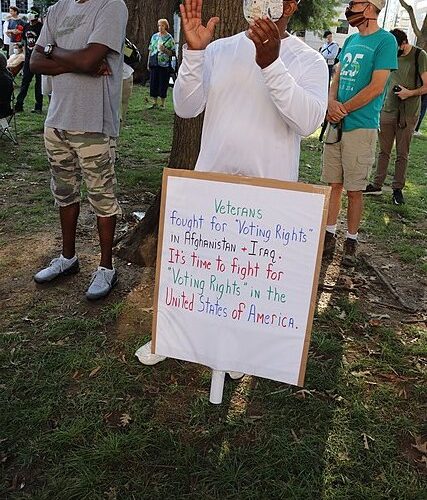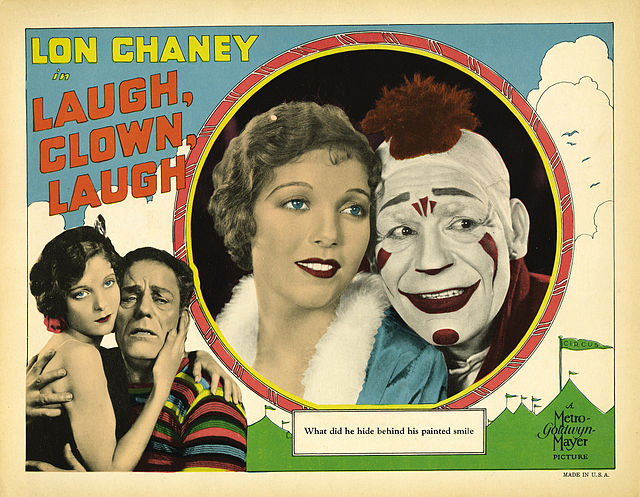Part I: The Issue
Small voices are struggling to be heard, and it appears that their concerns go unnoticed. Despite the significance of their thoughts, ideas, and opinions, these small voices lack the necessary volume. Even in a country with a government elected by the citizens, the electoral system fosters an environment marked by a “Grossly unequal distribution of campaign resources, unequal voting power depending on where you live, the winner-take-all method of distributing electoral votes, unbound electors, the House of Representatives can choose the president, there’s enforcement of a two-party system, the presidency can be won without a majority of the popular vote… and looking at the numbers, minority rules” (FairVote). Voter suppression, a tactic not only employed by candidates and political figures but also embedded in the U.S. electoral college system, serves to marginalize voices influencing the power structure.
In a democracy characterized by diverse voices, successful social planning demands the inclusion of all perspectives. Since 2010, the likelihood of two randomly chosen Americans being of different races or ethnicities has increased. “We are confident that the changes we are seeing from 2010 to 2020 in the diversity measures, which rely on mutually exclusive Hispanic origin by race groups, likely reflect actual demographic changes in the population over the past 10 years as well as improvements to the question designs, data processing and coding” (Jensen, et al.). Recent research aims to comprehend the U.S. demographic more inclusively, and findings from a decade marked by significant social progress suggest that the voices labeled as minority may no longer constitute a minority. Additionally, the comparison of “who” versus “how many” becomes a relevant consideration.
Despite arguments against the disparity between “minority” and “majority” voices, the residents of New Orleans bear witness to it. In a majority non-white city, evidence of voter suppression targeting certain genders and ethnic groups persists, and these efforts are intensifying. According to the multicultural news medium, Louisiana Weekly, “Since the 2010 Republican wave strengthened the party’s control over legislatures across the South, the GOP cited has the claims to justify passing legislation such as voter ID laws, which have been shown to curb voting and have a disparate suppressive impact on African Americans, Latinos, women, and young people. Now Republican lawmakers are taking new steps to restrict voter access and curb voter participation” (Barber). In 2021, Louisiana state legislators proposed over four times the number of bills aimed at limiting voting access compared to 2020. Southern states, including Louisiana, face an increased risk of voter suppression, with the Republican party spearheading these efforts.

Man holds a sign at Voting Rights protest reading “Veterans fought for voting rights in Afghanistan and Iraq. It’s time to fight for voting rights in the United States of America”
While voter suppression has long been a concern in the U.S., the tactics to effect change have remained consistent. The Freedom Ride, symbolized by “bus trips through the American South in 1961 to protest segregated bus terminals,” continues its journey. In 2021, The Freedom Ride for voting rights initiated its “signature ‘Blackest Bus in America’ for a voter outreach tour from Jackson, Mississippi to Washington D.C., making stops in key southern states to rally with partner organizations and concerned citizens and discuss the issues impacting their communities” (Black Voters Matter Fund). New Orleans marked the beginning of this ride. Activism has historically relied on being the loudest in the room and has been successful. However, statistically, there is still an issue, and to address it, the focus should start with the inherent power held by small voices.
Part II: Data-Driven Solution
Solutions in the past to voices not being heard have yielded immense positive repercussions. However, when protests and screaming into a void become tiring, the small Jewish community in the U.S. has accidentally found a solution—this is one group with a small voice worth listening to. Throughout history, the Jewish community has known the truth of a small voice all too well, from recently immigrated individuals to those with centuries-old American lineages. In the United States, Jewish people have faced various forms of discrimination since their arrival at the colony of New Amsterdam (New York).
Dutch governor Peter Stuyvesant petitioned to have them removed, but the financial benefits of Jewish mercantile networks prevailed (The Gale Collections).Despite contributing to the country through wars and aiding its economy, the Jewish community has often been treated as second-tiered. The slight decline in antisemitism post-Holocaust was a mere pause; the public turned from tropes of a power-hungry globalist to ones of genetic inferiority, projecting antisemitic ideology through different outlets. During a break, after 1945 and somewhat through the 1980s, the American population allowed the Jewish community to rise in the ranks by loosening restrictions on an immersed social life.
It wasn’t until 1960 that Yale University ended an informal admissions policy restricting Jewish enrollment to about 10 percent (Johnson). For Jewish people, emancipation has meant collaboration with people in power, allowing their advancement in American society. During post-WWII America, while the Jewish community was beginning to be treated equally, film, video entertainment, and media were growing. Jewish people found a niche they could access and even help build from the ground up. “These Jewish-American entrepreneurs succeeded because motion pictures were widely popular, and gentile industrialists largely wanted nothing to do with the business. The moviegoing audience was primarily the working class and immigrants; tickets were cheap, and silent cinema had no language barrier. This audience made the mostly Protestant cultural elite dismiss film as ‘lowbrow,’ and major investors considered it a passing fad” (Weinstock).
The Jewish community worked around not being listened to as trustworthy voices. “Not one of the major television news operations—Fox News, CNN, MSNBC, ABC News, CBS News, or NBC News—is headed by a Jewish executive” (Palmer). Only through entertainment could the Jewish community use its guise of humor to reach millions of people who may not even know they are encouraging Jewish expression.
The solution Jewish Americans found to not being heard may be summarized by Henry Bial’s research on Jewish people in Media. Bial coins the term “Jew Media,” characterized by irony—a time-honored strategy by which the minority negotiates its relationship with the mainstream. An ironic outlook toward life, as Bial suggests, has sometimes been a coded signal of Jewishness. The inherent satire that the Jewish community brought into entertainment media allowed for their critique of the mainstream and antisemitic culture in the U.S. Approaching the power they obtain through entertainment outlets with an ironic outlook allows “Jew Media” to repurpose anti-Jewish stereotypes as a critique of anti-Semitism, enabling them to assert Jewish pride in quotation marks.

Steven Spielberg and Menachem Golan on set for a movie
While the Jewish community ascended in the ranks of society, the reemergence of stereotypes and power-hungry tropes reminiscent of the Nazi agenda became apparent. This fixation on power was significantly influenced by the rise of Jewish people in the media. While some may view the increased presence of a minority group in media as a cause for celebration, opponents of the prosperity of the Jewish population quickly focused on the power they had obtained. “CNN anchor Rick Sanchez was fired last week [2010] for calling The Daily Show host Jon Stewart a bigot and implying that Jews control the media. ‘Everybody who runs CNN is a lot like Stewart, and a lot of people who run all the other networks are a lot like Stewart,’ he said, trying to explain that Jews are not an oppressed minority” (Palmer). Although this tactic may seem counterintuitive when examining the opposition, the backlash is incomparable to the progress achieved by “Jew Media.” “The Jewish-American founders of the major Hollywood studios left their mark with the culture they created: enduringly popular movies that emphasize what’s shared in American and Jewish values, blurring the hyphen between ‘Jewish’ and ‘American’ until generations to come could consider these identities one and the same” (Weinstock). Starting with the validation of their identity, the Jewish community soon became one that demanded people’s attention. In my eyes, and in the eyes of many other Jewish people (Weinstock), as long as we are still allowed to stomp on its grounds, we can be criticized for running Hollywood.
Part III: Implementation
With the increasing accessibility of social platforms through social media, the tactic that Jewish people found can now be implemented much more easily than infiltrating an entire entertainment sector through a cultural loophole. “Jew Media has lessons to offer to all of ethnic and performance studies vis-a-vis the new media landscape” (Bial). Furthermore, the effectiveness of a satirical approach to being heard is supported in a scientific context. Haley Neidich, LCSW, states, “Humor is a very effective way to retain attention as it creates an emotional connection and a sense of entertainment for the individual watching. Humor also releases feel-good hormones for people who are engaged with the content so it is actually physically enjoyable for them to keep watching. Finally, humor helps people to feel more connected to one another, and with so many folks feeling lonely, that’s a pretty powerful thing” (White).

A poster that reads “Laugh Clown Laugh”
As minority groups in New Orleans approach the issue of voter suppression, keeping in mind their current role in society may assist in their rejection of it. Self-deprecation has proven to be tactful, and many insiders are responsive to self-aware comments, encouraging minority access to more voices. “In politics, humor can be perceived as a break from the status quo and makes the individual speaking seem more approachable and interesting. Having a positive perspective of someone makes it much more likely that you’re willing to listen to their perspective” (White).
Though finding a niche to implement Jew Media may be challenging, marginalized politicians, for example, working within the same system that suppresses their community, may find solace in using self-deprecation to refute the ridiculous stereotypes placed on them. Voting activists who feel their work goes unnoticed may use humor to entertain while still delivering their message. The results of a case study examining a company in Spain, “reveal that the number of website visits is positively related to business integration” (Bernal-Jurado). In an era where online popularity can influence real-life engagement, Jew Media can be interpreted by anyone with access to social media, breaking barriers to what marginalized groups think they have access to. By analyzing the approach rather than the activism itself, a much more nuanced protest begins, one that disguises its serious intent with laughable content.
This piece was edited by Rafael De Alba as part of Professor Kelley Crawford’s Digital Civic Engagement course at Tulane University.
References
Bial, Henry. “Jew Media: Performance and Technology for the 58th Century.” TDR (1988-), vol. 55, no. 3, 2011, pp. 134–43, http://www.jstor.org/stable/23017937 . Accessed 29 April 2022.
“Problems with the Electoral College.” FairVote, Fairvote.org https://archive3.fairvote.org/reforms/national-popular-vote/the-electoral-college/problems-with-the-electoral-college/
Jensen, Eric, et al. “The Chance That Two People Chosen at Random Are of Different Race or Ethnicity Groups Has Increased since 2010.” Census.gov, U.S Census Bureau, 25 Mar. 2022, https://www.census.gov/library/stories/2021/08/2020-united-states-population-more-racially-ethnically-diverse-than-2010.html
Flaherty, Jordan. “Meet the Vibrant Community of Resistance behind New Orleans’ Historic Protests.” Meet the Vibrant Community of Resistance behind New Orleans’ Historic Protests, Waging NonViolence, 1 July 2020, https://wagingnonviolence.org/2020/07/vibrant-community-resistance-new-orleans-abolition/
“Black Voters Matters Announces Juneteenth Launch, National Partnerships for Upcoming ‘Freedom Ride for Voting Rights.’” Black Voters Matter Fund, 13 May 2021, https://blackvotersmatterfund.org/news/black-voters-matters-announces-juneteenth-launch-national-partnerships-for-upcoming-freedom-ride-for-voting-rights/
Gale Collections. “History of Antisemitism in America | Gale.” Gale, A Cengage Company, https://www.gale.com/primary-sources/political-extremism-and-radicalism/collections/history-of-anti-semitism
Johnson, Dirk. “Yale’s Limit on Jewish Enrollment Lasted until Early 1960s, Book Says.” The New York Times, The New York Times, 4 Mar. 1986, https://www.nytimes.com/1986/03/04/nyregion/yale-s-limit-on-jewish-enrollment-lasted-until-early-1960-s-book-says.html
Palmer, Brian. “Rick Sanchez Says Jews Control the Media. Is That True?” Slate Magazine, Slate, 5 Oct. 2010, https://slate.com/news-and-politics/2010/10/rick-sanchez-says-jews-control-the-media-is-that-true.html
Weinstock, Stuart. “How American Jews Built Hollywood.” Unpacked, 14 Dec. 2021, https://jewishunpacked.com/how-american-jews-built-hollywood/
White, Taneasha. “Humor Promotes Spread and Retention of News, Study Finds.” Verywell Mind, Verywell Mind, 3 Feb. 2021, https://www.verywellmind.com/humor-key-in-helping-young-adults-pay-attention-to-news-5097144
Bernal-Jurado, Enrique et al. “Online popularity as a development factor for cooperatives in the winegrowing sector.” Journal of business research vol. 123 (2021): 79-85. doi:10.1016/j.jbusres.2020.09.064
 NOLAbeings
Multimedia artist Claire Bangser created NOLAbeings as a portrait-based story project that marries...
NOLAbeings
Multimedia artist Claire Bangser created NOLAbeings as a portrait-based story project that marries...
 Data corner: Adobe Suite (create a PDF, social media graphic, presentation, edit a photo and video
Data corner is where you go to work with analytics and top tech skills. It takes on everything from PERL and SQL to Canva and Sprout Social.
Data corner: Adobe Suite (create a PDF, social media graphic, presentation, edit a photo and video
Data corner is where you go to work with analytics and top tech skills. It takes on everything from PERL and SQL to Canva and Sprout Social.
